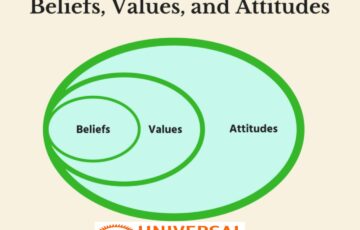Attitude
Q. What do you understand about cognitive dissonance? Giving examples, discuss how it influences one’s behavior and attitude.
Cognitive dissonance is a phenomenon in which a person experiences psychological agony due to conflicting thoughts or beliefs. It is the feeling of inconsistency in feelings, beliefs and behaviour (the three components of attitude). For example, when people smoke (behavior) and are aware that smoking causes cancer (cognition), they are in a state of cognitive dissonance.
Attitude is a favorable or unfavorable evaluative reaction towards something or someone found in one’s beliefs, feelings, or intended behavior. Behaviour is actual expression of these feelings. Attitude is internal and Behaviour is external.
The Principle of Cognitive consistency states that human beings have an inner drive to hold their attitudes and behavior in harmony and avoid disharmony. So, when there is an inconsistency between attitudes or behaviors (dissonance), something must change to eliminate the dissonance.
Change in behavior and attitude may occur by reducing the dissonance in following three ways:
- When one of the dissonant elements is a behavior, the individual can change or eliminate the
behavior. For e.g.- giving up smoking.
- Acquire new information that outweighs the dissonant beliefs. For e.g. new information such as “research has not proved definitely that smoking causes lung cancer” may reduce the dissonance.
- Reduce the importance of the cognitions (i.e. beliefs, attitudes). For e.g. a person could convince himself that it is better to “live for today” than to “save for tomorrow”, thus decreasing the importance of the dissonant cognition (i.e. smoking is bad for one’s health).
Though it is difficult to objectively measure cognitive dissonance, it plays a major role in shaping
attitudes and behaviours that influence judgments, decisions and evaluation of different people.






